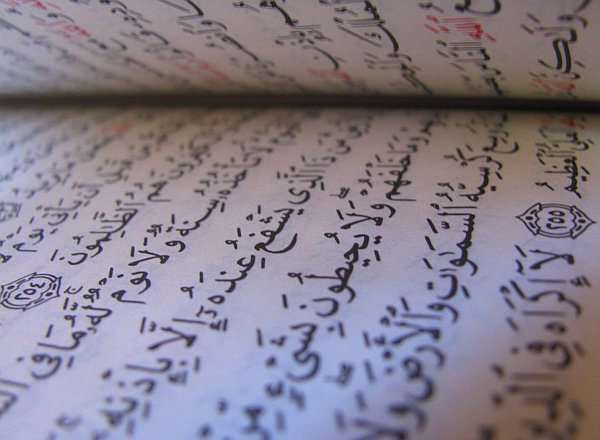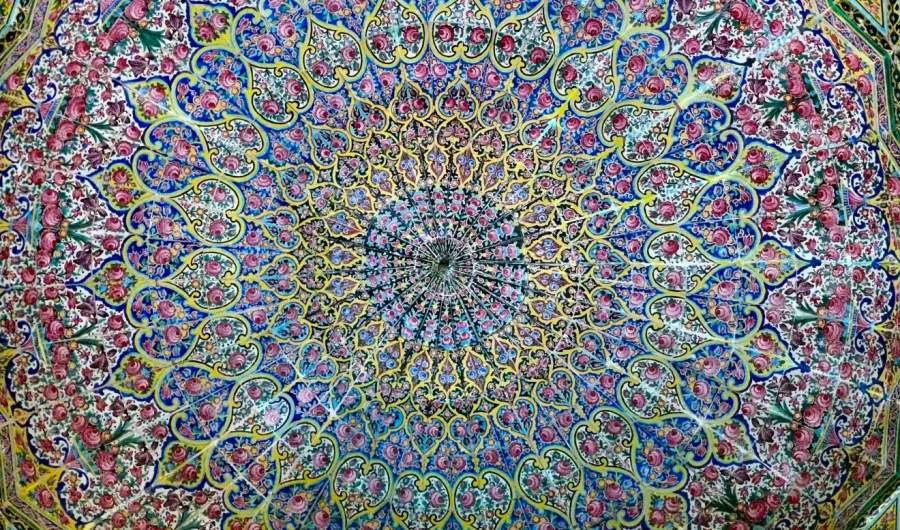
Some people allege that there was no methodology for recording Hadith, especially during the Prophet’s lifetime. Accordingly, they claim, this casts doubt about the authenticity of the science of Hadith and Sunnah in general.
This allegation is quite wrong as during his lifetime, the Prophet (peace and blessings be upon him) used to teach his Sunnah by three methods: verbal, written (dictation to scribes), and practical demonstration.
As far as the first method is concerned, the Prophet used to repeat important things three times. He would then listen to what the Companions had learned from him.
The second method includes all the letters of the Prophet to kings inviting them to Islam, and to Muslim governors detailing the rules of zakah and other legal matters.
Likewise, the Prophet taught his Companions how to perform ablution, prayer, fasting, pilgrimage, and so on. This represents the third method of teaching the Sunnah by the Prophet.
The Companions played an important role in learning and teaching the Hadith of the Prophet. They used all the three methods applied by the Prophet to teach the Sunnah, and they committed hadiths of the Prophet to memory.
Writing Down the Hadith (Tadwin Al-Hadith)
In Hadith literature, we are faced with hadiths that forbid and others that permit the writing down of hadiths.
Don’t record hadith
Abu Sa`id Al-Khudri reported a hadith that forbids the writing down of hadiths:
“Do not write from me anything except the Qur’an and whosoever has written anything from me other than the Qur’an should erase it.”
All You Want to Know About Qur’an Revelation
This is the only sound hadith in this regard. Other often-quoted hadiths that forbid the writing down of hadiths are weak and unacceptable.
The above mentioned hadith is recorded in Al-Bukhari. The hadith meant that nothing should be written with the Qur’an on the same sheet, as this might lead to mixing the text of the Qur’an with that of the Hadith.
This command was given when the Qur’an was being revealed bit by bit and was yet incomplete.
Another interpretation of the hadith is that it was forbidden to write down hadiths in early days because all attention was to be paid to the Qur’an and its preservation.
Then later on, when there was no fear of abandoning the Qur’an, the previous order was abrogated and the Companions were permitted to write down hadiths.
Permission for recording hadith
On the other hand, we have evidence that the Prophet approved of writing down his hadiths.
We find that many Companions recorded hadiths. For example, `Abdullah ibn `Amr was permitted and even encouraged by the Prophet (peace and blessings be upon him) to write down Hadith.
In addition, some 50 Companions and many followers are said to have possessed manuscripts (sahifah, Arabic plural suhuf), which was used as a term to designate compendia of Hadith that emerged during the century before the formation of the classical collections.
The original manuscripts have been lost, but a very few copies have survived. An example is the manuscript of Hammam ibn Munabbih, who learned from Abu Hurairah and from him he wrote his manuscript which contains 138 hadiths.
This manuscript is believed to have been written down around the middle of the first century after the Hijrah (seventh century CE).
Collecting the Sunnah
In the beginning of the second Hijri century, during the reign of `Umar ibn `Abdul-`Aziz (AH 97-101/715-19 CE) the texts of Hadith were committed to writing. The Sunnah was collected in Syria, Egypt, Iraq, Yemen, and Khurasan. Leading theologians uttered some statements warning against unscrupulous reporters and their unreliable reports.
Imam Malik (d. AH 179/795 CE) was the first to undertake the comprehensive and systematic compilation of Hadith. His work is known as Al-Muwatta’ (The Trodden Path). Later, other compilations came into existence.
In this regard, it is very important to note that there are two kinds of compilations: musnad and musannaf. In musnad collections, hadiths are arranged alphabetically under the names of the Companions on whose authority these hadiths were reported. An example of this kind is the Musnad of Ibn Hanbal (d. AH 241/855 CE).
In musannaf collections, hadiths are recorded under various headings dealing with juridical subjects. Examples are As-Sihah As-Sittah (The Six Authentic Books of Hadith), namely the compilations of Al-Bukhari (d. 256 AH/870 CE), Muslim (d. 261 AH/874 CE), An-Nasa’i (d. 303 AH/916 CE), Abu Dawud (d. 275 AH/889 CE), At-Tirmidhi (d. 279 AH/892 CE), and Ibn Majah (d. 273 AH/886 CE).
Evolution of the Science of Hadith
As time passed, many hadiths appeared due to several reasons. Some of these hadiths were not authentic. Therefore, it was quite necessary to sift out the authentic from the fabricated.
How to Avoid Misquoting Hadith (Guidelines & Examples)
One can say that this task was as necessary as that of removing the weeds from a flower bed. To be sure, the task was not that easy for early scholars. They had to develop a tool by which they could regulate such immense Hadith literature.
It should be observed that the rules and criteria developed by Hadith scholars regulating their study of Hadith were meticulous, but some of their terminology varied from person to person.
Their principles began to be systematically written down, but scattered among various books, for example, the Risalah of Ash-Shafi`i, the introduction to the Sahih of Muslim, and the Jami` of At-Tirmidhi.
Many of the criteria of early Hadith scholars, such as Al-Bukhari, were deduced by later scholars from a careful study of which reporters or isnads (chains of transmission) were accepted or rejected by them.
In this way the science of Hadith (mustalah al-hadith) emerged. It was the purpose of this science to sift, organize, develop, and systemize earlier material. Scholars put forward theories, expanded biographical works of all generations. They made full and well-defined classification of narrators and hadiths, and subjected works of leading compilers to vigorous scrutiny, sparing not even Al-Bukhari and Muslim.
Stages of Recording Hadith and Evolution of Hadith Sciences
Some people allege that there was no methodology for recording Hadith, especially during the Prophet’s lifetime. Accordingly, they claim, this casts doubt about the authenticity of the science of Hadith and Sunnah in general.
This allegation is quite wrong as during his lifetime, the Prophet (peace and blessings be upon him) used to teach his Sunnah by three methods: verbal, written (dictation to scribes), and practical demonstration.
As far as the first method is concerned, the Prophet used to repeat important things three times. He would then listen to what the Companions had learned from him.
The second method includes all the letters of the Prophet to kings inviting them to Islam, and to Muslim governors detailing the rules of zakah and other legal matters.
Likewise, the Prophet taught his Companions how to perform ablution, prayer, fasting, pilgrimage, and so on. This represents the third method of teaching the Sunnah by the Prophet.
The Companions played an important role in learning and teaching the Hadith of the Prophet. They used all the three methods applied by the Prophet to teach the Sunnah, and they committed hadiths of the Prophet to memory.
Writing Down the Hadith (Tadwin Al-Hadith)
In Hadith literature, we are faced with hadiths that forbid and others that permit the writing down of hadiths.
Don’t record hadith
Abu Sa`id Al-Khudri reported a hadith that forbids the writing down of hadiths:
“Do not write from me anything except the Qur’an and whosoever has written anything from me other than the Qur’an should erase it.”
All You Want to Know About Qur’an Revelation
This is the only sound hadith in this regard. Other often-quoted hadiths that forbid the writing down of hadiths are weak and unacceptable.
The above mentioned hadith is recorded in Al-Bukhari. The hadith meant that nothing should be written with the Qur’an on the same sheet, as this might lead to mixing the text of the Qur’an with that of the Hadith.
This command was given when the Qur’an was being revealed bit by bit and was yet incomplete.
Another interpretation of the hadith is that it was forbidden to write down hadiths in early days because all attention was to be paid to the Qur’an and its preservation.
Then later on, when there was no fear of abandoning the Qur’an, the previous order was abrogated and the Companions were permitted to write down hadiths.
Permission for recording hadith
On the other hand, we have evidence that the Prophet approved of writing down his hadiths.
We find that many Companions recorded hadiths. For example, `Abdullah ibn `Amr was permitted and even encouraged by the Prophet (peace and blessings be upon him) to write down Hadith.
In addition, some 50 Companions and many followers are said to have possessed manuscripts (sahifah, Arabic plural suhuf), which was used as a term to designate compendia of Hadith that emerged during the century before the formation of the classical collections.
The original manuscripts have been lost, but a very few copies have survived. An example is the manuscript of Hammam ibn Munabbih, who learned from Abu Hurairah and from him he wrote his manuscript which contains 138 hadiths.
This manuscript is believed to have been written down around the middle of the first century after the Hijrah (seventh century CE).
Collecting the Sunnah
In the beginning of the second Hijri century, during the reign of `Umar ibn `Abdul-`Aziz (AH 97-101/715-19 CE) the texts of Hadith were committed to writing. The Sunnah was collected in Syria, Egypt, Iraq, Yemen, and Khurasan. Leading theologians uttered some statements warning against unscrupulous reporters and their unreliable reports.
Imam Malik (d. AH 179/795 CE) was the first to undertake the comprehensive and systematic compilation of Hadith. His work is known as Al-Muwatta’ (The Trodden Path). Later, other compilations came into existence.
In this regard, it is very important to note that there are two kinds of compilations: musnad and musannaf. In musnad collections, hadiths are arranged alphabetically under the names of the Companions on whose authority these hadiths were reported. An example of this kind is the Musnad of Ibn Hanbal (d. AH 241/855 CE).
In musannaf collections, hadiths are recorded under various headings dealing with juridical subjects. Examples are As-Sihah As-Sittah (The Six Authentic Books of Hadith), namely the compilations of Al-Bukhari (d. 256 AH/870 CE), Muslim (d. 261 AH/874 CE), An-Nasa’i (d. 303 AH/916 CE), Abu Dawud (d. 275 AH/889 CE), At-Tirmidhi (d. 279 AH/892 CE), and Ibn Majah (d. 273 AH/886 CE).
Evolution of the Science of Hadith
As time passed, many hadiths appeared due to several reasons. Some of these hadiths were not authentic. Therefore, it was quite necessary to sift out the authentic from the fabricated.
How to Avoid Misquoting Hadith (Guidelines & Examples)
One can say that this task was as necessary as that of removing the weeds from a flower bed. To be sure, the task was not that easy for early scholars. They had to develop a tool by which they could regulate such immense Hadith literature.
It should be observed that the rules and criteria developed by Hadith scholars regulating their study of Hadith were meticulous, but some of their terminology varied from person to person.
Their principles began to be systematically written down, but scattered among various books, for example, the Risalah of Ash-Shafi`i, the introduction to the Sahih of Muslim, and the Jami` of At-Tirmidhi.
Many of the criteria of early Hadith scholars, such as Al-Bukhari, were deduced by later scholars from a careful study of which reporters or isnads (chains of transmission) were accepted or rejected by them.
In this way the science of Hadith (mustalah al-hadith) emerged. It was the purpose of this science to sift, organize, develop, and systemize earlier material. Scholars put forward theories, expanded biographical works of all generations. They made full and well-defined classification of narrators and hadiths, and subjected works of leading compilers to vigorous scrutiny, sparing not even Al-Bukhari and Muslim.
A Brief History of Hadith Methodology
As time passed after the Prophet (peace and blessings be upon him) passed away, more reporters were involved in each isnad (chain of narrators) of the Prophet’s hadiths. So, the situation demanded strict discipline in the acceptance of hadiths or Prophet’s traditions. The rules regulating this discipline are known as mustalah al-hadith (Hadith methodology).
Among the early traditionists (muhaddithun, scholars of Hadith), the rules and criteria governing their study of Hadith were meticulous. But some of their terminology varied from person to person. Their principles began to be systematically written down, but scattered among various books; for example, in Ar-Risalah of Ash-Shafi`i (d. AH 204), the introduction to the Sahih of Muslim (d. AH 261) and the Jami` of At-Tirmidhi (d. AH 279).
Besides, many of the criteria of early traditionists, for example Al-Bukhari, were deduced by later scholars from a careful study of which reporters or isnads were accepted and rejected by them.
One of the earliest writings to attempt to cover methodology comprehensively, using standard (generally accepted) terminology, was the work by Ar-Ramahurmuzi (d. AH 360).
The next major contribution was Ma`rifat `Ulum al-Hadithby Al-Hakim (d. AH 405), which covered 50 classifications of Hadith, but still left some points untouched; Abu Nu`aim Al-Asbahani (d. AH 430) completed some of the missing parts to this work.
After that came Al-Kifayah fi `Ilm ar-Riwayah of Al-Khatib Al-Baghdadi (d. AH 463) and another work on the manner of teaching and studying Hadith. Later scholars were considered to be greatly indebted to Al-Khatib’s work.
After further contributions by Qadi `Iyad Al-Yahsubi (d. AH 544) and Abu Hafs Al-Mayanji (d. AH 580) among others, came the work which, although modest in size, was so comprehensive in its excellent treatment of the subject that it came to be the standard reference for thousands of scholars and students of Hadith to come, over many centuries until the present day: `Ulum al-Hadith of Abu `Amr `Uthman ibn As-Salah (d. AH 643), commonly known as Muqaddimat Ibn As-Salah (Muqaddimah of Ibn As-Salah), was compiled while he taught in the dar al-Hadith (Hadith school) of several cities in Syria.
Some of the numerous later works based on that of Ibn As-Salah are these:
– Al-Irshad, an abridgement of Muqaddimah, by An-Nawawi (d. AH 676), which he later summarized in hisTaqrib. As-Suyuti (d. AH 911) compiled a valuable commentary on the latter entitled Tadrib Al-Rawi.
– Ikhtisar `Ulum al-Hadith by Ibn Kathir (d. AH 774); Al-Khulasah by Al-Taibi (d. AH 743); Al-Minhal by Badr Ad-Din ibn Jama`ah (d. AH 733); Al-Muqni` by Ibn Al-Mulaqqin (d. AH 802); and Mahasin al-Istilah by Al-Balqini (d. AH 805 ), all of which are abridgements of Muqaddimat Ibn As-Salah.
– Nukat by Az-Zarkashi (d. AH 794); At-Taqyid wal-Idah by Al-`Iraqi (d. AH 806); andAn-Nukat by Ibn Hajar Al-`Asqalani (d. AH 852), all of which are further notes on the points made by Ibn As-Salah.
– Alfiyyat al-Hadith by Al-`Iraqi, a rewriting of Muqaddimah in the form of a lengthy poem, which became the subject of several commentaries, including two (one long, one short) by the author himself; Fath al-Mughith by As-Sakhawi (d. AH 903); Qatar ad-Durar by As-Suyuti; and Fath al-Baqi by Sheikh Zakariya Al-Ansari (d. AH 928).
Other notable treatises on Hadith methodology include the following:
– Al-Iqtirah by Ibn Daqiq Al-`Id (d. AH 702); Tanqih al-Anzar by Muhammad ibn Ibrahim Al-Wazir (d. AH 840), which was the subject of a commentary by Al-Amir As-San`ani (d. AH 1182).
– Nukhbat al-Fikar by Ibn Hajar Al-`Asqalani, again the subject of several commentaries, including one by the author himself, one by his son Muhammad, and those of `Ali Al-Qari (d. AH 1014), `Abdur-Ra’uf Al-Munawi (d. AH 1031) and Muhammad ibn `Abdul-Hadi As-Sindi (d. AH 1138). Among those who rephrased the Nukhbah in poetic form are At-Tufi (d. AH 893) and Al-Amir As-San`ani.
– Alfiyyat al-Hadith by As-Suyuti, the most comprehensive poetic work in the field; Al-Manzumah by Al-Baiquni, which was expanded upon by, among others, Az-Zurqani (d. AH 1122) and Nawab Siddiq Hasan Khan (d. AH 1307); Qawa`id at-Tahdith by Jamal Ad-Din Al-Qasimi (d. AH 1332).
– Tawjih an-Nazar by Tahir Al-Jaza’iri (d. AH 1338), a summary of Al-Hakim’sMa`rifah.




